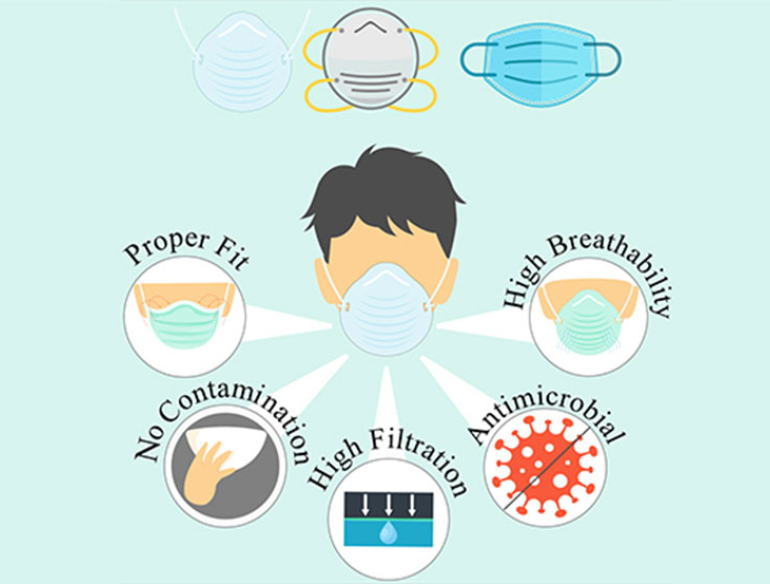During outbreaks of emerging infections (such as COVD-19), personal protective equipment (PPE) is a critical non-pharmaceutical intervention that significantly reduces the spread of pathogens, especially when drugs and vaccines are inaccessible. There was a critical worldwide shortage of PPE (especially face masks/respirators) during the COVID-19 pandemic, with many countries using last-resort strategies, including homemade masks, even for health workers. The cloth masks used during the pandemic were often low quality, provided low protection against pathogens, were uncomfortable, and lacked antimicrobial activity. Moreover, there is insufficient evidence on the performance of commonly accessible fabrics to inform appropriate fabric choices for the optimal design of cloth masks. Single-use disposable masks are expensive because a continuous supply is required, and they create environmental waste. Similarly, conventional protective clothing has several drawbacks such as high weight, bulky nature, lack of mobility, heat stress, low heat dissipation, high physical stress, lack of breathability, and reduced protection against pathogens and hazards. Therefore, there is a need for better, more sustainable, re-usable high-performing PPE (masks and protective clothing) with a antimicrobial properties that are protective enough for both frontline workers and the community.
Through interdisciplinary research, we are designing a high-performing mask and developing graphene/metal nanoparticles incorporated multifunctional antimicrobial fabrics for application in PPE.
Using violent respiratory emission, image-based flow measurement diagnostic system, and evaluating all dimensions of protection of commonly available fabrics and their layered combinations, we conducted a series of experiments on aerosol blocking and other properties of different fabrics and combinations of fabrics. For next generation fabrics development, we are coating graphene derivatives and metal nanoparticles using coupling agents.
Our results reveal that a well-designed cloth mask can outperform a three-layered surgical mask for such violent respiratory events. Our developed graphene and nanoparticles coated cotton/silk fabrics showed excellent antimicrobial and multifunctional activities.
Our experimental findings provided a blueprint for the optimal cloth mask for people making their own homemade cloth masks that can outperform surgical masks. Our graphene and nanoparticles incorporated antimicrobial and multifunctional cotton or silk fabrics have great potential to be used in next-generation PPE against forthcoming biothreats.

